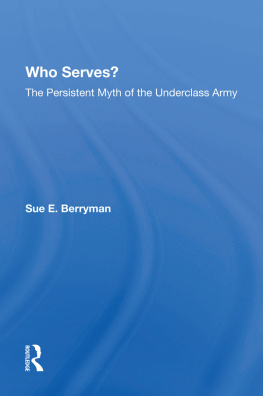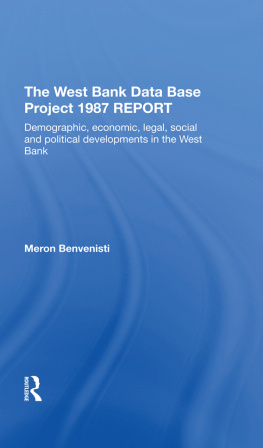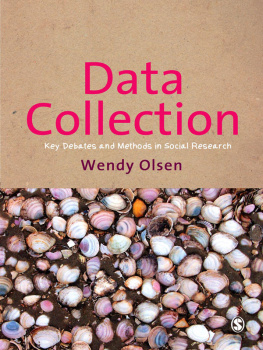First published in 1988 by Westview Press
Published in 2021 by Routledge
605 Third Avenue, New York, NY 10017
2 Park Square, Milton Park, Abingdon, Oxon OX14 4RN
Routledge is an imprint of the Taylor & Francis Group, an informa business
Copyright 1988 by Taylor & Francis
All rights reserved. No part of this book may be reprinted or reproduced or utilised in any form or by any electronic, mechanical, or other means, now known or hereafter invented, including photocopying and recording, or in any information storage or retrieval system, without permission in writing from the publishers.
Notice:
Product or corporate names may be trademarks or registered trademarks, and are used only for identification and explanation without intent to infringe.
Library of Congress Cataloging-in-Publication Data
Berryman, Sue E., 1938-
Who serves?
Bibliography: p.
Includes index.
1. Military service, VoluntaryUnited States.
2. Sociology, MilitaryUnited States. I. Title.
UB323.B474 1988 355.223620973 86-9111
ISBN 0-8133-7184-8
ISBN 13: 978-0-3672-1345-9 (hbk)
ISBN 13: 978-0-3672-1626-9 (pbk)
DOI: 10.4324/9780429267536
Contents
Preface
Acknowledgments
Introduction
2 COMPOSITION OF THE NINETEENTH AND EARLY TWENTIETH CENTURY VOLUNTEER ENLISTED FORCES
Compositional Images of American Volunteers
Compositional Realities
Conclusion
3 REPRESENTATIVENESS OF WARTIME ENLISTED FORCES
Representativeness of the Civil War Draft
Representativeness of the World War I Draft
Representativeness of the Drafts for World War II, Korean War, Korea-Vietnam Interim, and Vietnam War
Conclusions
4 THE POLITICS OF ENLISTED MANPOWER COMPOSITION
Discrepancies Between Compositional Images and Realities: Why?
Political Objectives for the Enlisted Force
Failures in Political Markets
5 LOYALTY TO CIVILIAN VALUES AND GOVERNMENT POLICIES
Three Loyalty Issues
Minority Loyalty
Conditions for Loyalty
6 DETERRENT AND COMBAT EFFECTIVENESS
Deterrent Effectiveness
Combat Effectiveness
7 EQUAL SACRIFICE
8 EQUAL ENTITLEMENT
Issues
Assumptions and Data Sources
Assumption 1: Women Cannot Fight
Assumption 2: Men Will Not Fight Effectively in Mixed Sex Units
Assumption 3: The Civilian Society Will Not Let the Military Do Its Job If Women are used in Combat
Assumption 4: Foreign Governments will Interpret an American Use of Women in Combat as a Sign of Military Weakness
Conclusion
9 EPILOGUE
Bibliography
Index
- Preface Page
- Acknowledgments Page
- Introduction Page
- 2 Composition of the Nineteenth and Early Twentieth Century Volunteer Enlisted Forces
- Compositional Images of American Volunteers
- Compositional Realities
- Conclusion
- 3 Representativeness of Wartime Enlisted Forces
- Representativeness of the Civil War Draft
- Representativeness of the World War I Draft
- Representativeness of the Drafts for World War II, Korean War, Korea-Vietnam Interim, and Vietnam War
- Conclusions
- 4 The Politics of Enlisted Manpower Composition
- Discrepancies Between Compositional Images and Realities: Why?
- Political Objectives for the Enlisted Force
- Failures in Political Markets
- 5 Loyalty to Civilian Values and Government Policies
- Three Loyalty Issues
- Minority Loyalty
- Conditions for Loyalty
- 6 Deterrent and Combat Effectiveness
- Deterrent Effectiveness
- Combat Effectiveness
- 7 Equal Sacrifice
- 8 Equal Entitlement
- Issues
- Assumptions and Data Sources
- Assumption 1: Women Cannot Fight
- Assumption 2: Men Will Not Fight Effectively in Mixed Sex Units
- Assumption 3: The Civilian Society Will Not Let the Military Do Its Job If Women are used in Combat
- Assumption 4: Foreign Governments will Interpret an American Use of Women in Combat as a Sign of Military Weakness
- Conclusion
- 9 Epilogue
- Bibliography
- Index
- xii
- xiii
- xiv
- xv
- xvi
- xvii
- xviii
- xix
Guide
- Preface Page
- Acknowledgments Page
- Introduction Page
- Bibliography
- Index
Tables
2.1 Annual wage comparisons for enlisted military, fann laborers, and all non-fann employees, selected years
2.2 Average annual earnings in selected industries and occupations (1898)
3.1 Educational attainment of World War I draftees and 2529 year old population in 1920
3.2 Socioeconomic and educational profile of veterans and non-veterans by military period
3.3 Ratio of non-veteran to veteran means for selected characteristics and military period
3.4 Coefficients of variation for veterans and non-veterans by military period
3.5 Ratio of non-veteran to veteran standard deviations for selected characteristics and military period
4.1 Political objectives for the enlisted force and their compositional implications
4.2 Social groups at issue, by the objective for the enlisted force
5.1 Responses of World Warn American enlistees to questions about killing Japanese and Gennan soldiers
6.1 1981 DoD nonprior service accessions: AFQT scores and percent high school graduates by race and ethnicity
6.2 Distribution of male enlisted personnel by occupational category, 19451985
6.3 Distribution of male enlisted personnel by occupational category and race, September 1983
Figures
6.1 Pascals payoff matrix
6.2 The roles of raw recruit material in military effectiveness
Preface
This book was prepared under a grant from The Ford Foundation to me while I was a member of the Behavioral Sciences Department of The RAND Corporation. The views expressed in this book are my own and not necessarily shared by The RAND Corporation, its research sponsors, or The Ford Foundation.
This book is relevant to those with interests in American military manpower policy, federal youth policy, and policies toward women and minorities.
Sue E. Berryman
Washington, D.C., 1987
Acknowledgments
I owe thanks to several institutions and individuals for their contributions to this book. I am grateful to The Ford Foundation for providing the financial support and intellectual freedom that let me pursue the questions addressed here. Writing this book was pure pleasure, and not just in retrospect. I owe special thanks to two individuals at the Foundation when this project started: Richard Sharpe and Enid Schoettle. Mr. Sharpe encouraged the project in its initial stages, and Dr. Schoettle not only supported the project, but also shared her considerable knowledge of defense policy with me throughout the study.
This document reflects the contributions of a small team. They included Dr. Steven Schlossman, at that time a RAND Corporation historian who oversaw the historical research on domestic loyalty conflicts and on the social composition of the pie-World War II enlisted forces. He contributed not only his knowledge, but a disciplined enthusiasm for the woik. Under his direction, Joanne Brown and Mark Van Pelt, then graduate students in history at the University of Wisconsin at Madison, provided important research assistance.










